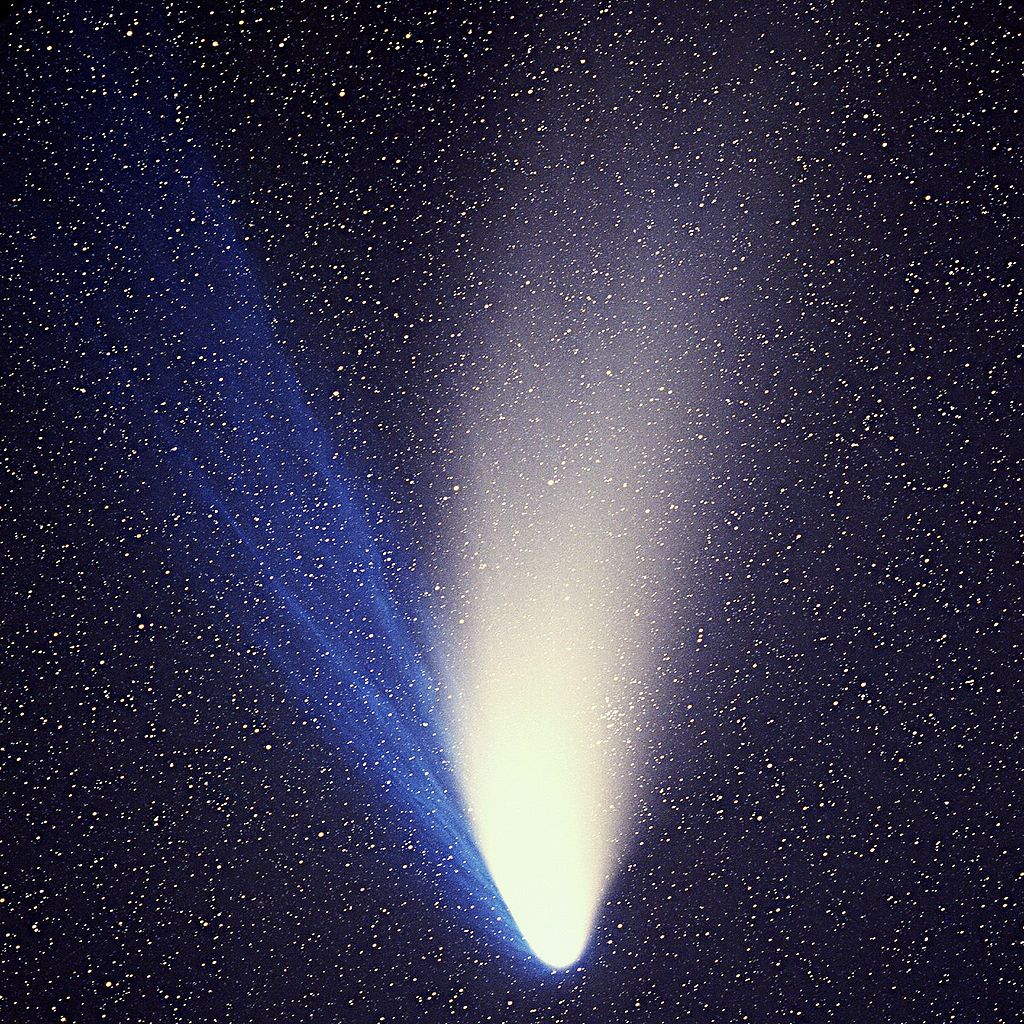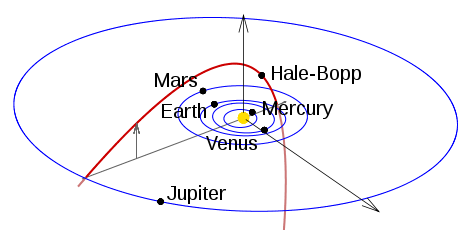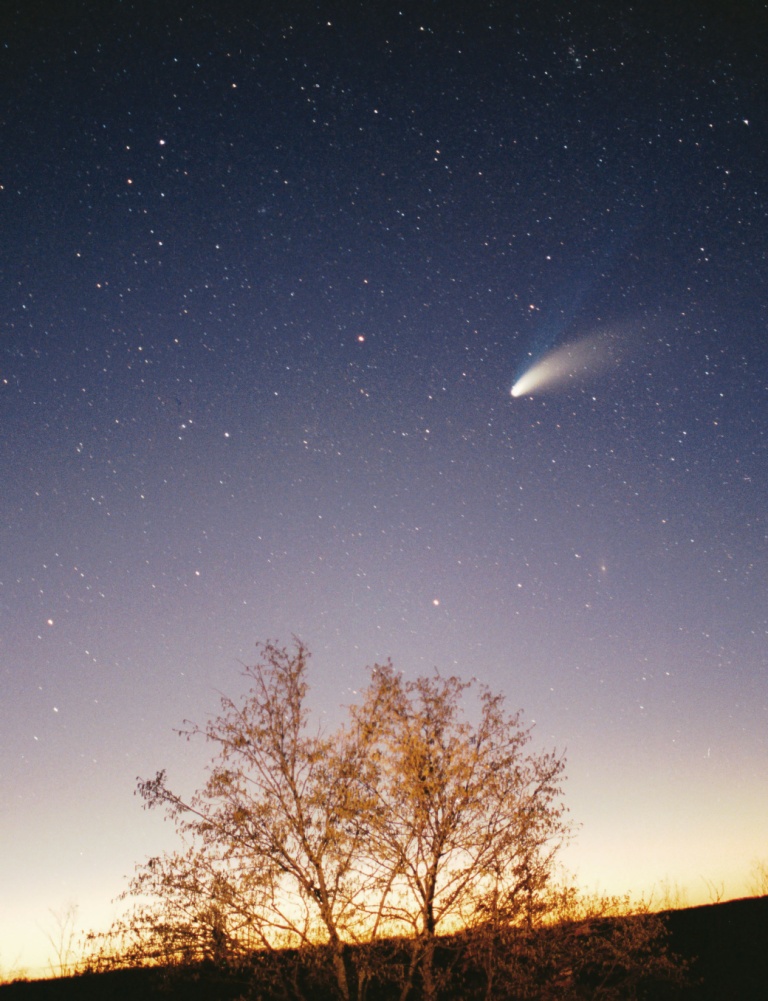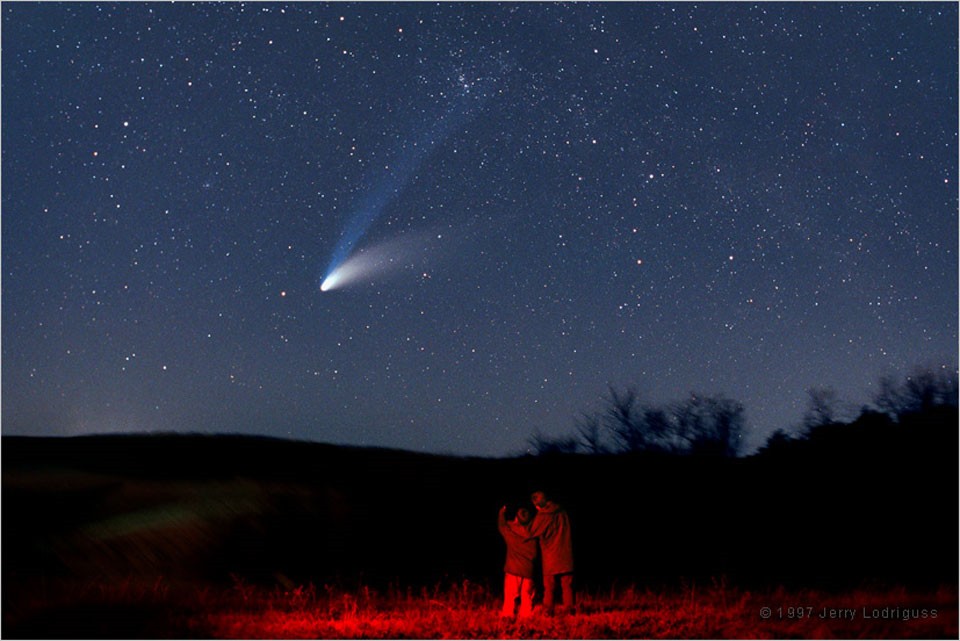Comet Hale-Bopp The Great Comet Of 1997
Histories Most Observed Comet!
Comet Hale–Bopp was discovered by two amateur astronomers in 1995 and likely became the most viewed comet of the 20th century due to its spectacular brightness, longevity and the media coverage! Hale-Bopp became known as the Great Comet of 1997 as it would be visible in the night skies for twice as long as the previous record holder!
Fast Fun Summary Facts
- Discovered: By Alan Hale & Tom Bopp, July 23rd, 1995
- Name: Comet Hale-Bopp (C/1995 O1)
- Maximum Apparent Magnitude: -0.8
- Nucleus Size: 40 – 60 Km
- Aphelion: 370.8 AU
- Perihelion: 0.914 AU
- Eccentricity: 0.9951
- Inclination: 89.4°
- Next Visible: 4385 AD
Fun Facts About The Spectacular Hale-Bopp Comet!
- The comet designated ‘C/1995 O1’ that would become known as Hale-Bopp was discovered, independently, on the evening of July 23rd 1995 by two amateur astronomers - Alan Hale and Thomas Bopp.
- At the time of its discovery, the comet was still between Saturn and Jupiter at a distance of over 7 AU – further than any comet discovered by amateur astronomers. At the time Hale-Bopp was already 1000 times brighter than Halley’s Comet would be at that distance as most comets, at that distance, are extremely faint!
- By May 1996, Hale-Bopp became visible to the naked eye and would continue to brighten as it passed perihelion (closest point to the Sun) on April 1, 1997, by which time it had developed into a spectacular sight! The comet was visible (even through the light pollution of city centres) for up to 18 months, twice as long as the previous longest!
- Hale Bopp was even visible during daylight hours in China, Mongolia and Siberia during a total solar eclipse! Oh boy, that would have been spectacular to see!
- Hale-Bopp eventually developed two distinct tails – a straight blue ion gas tail and a bright white dust tail that extended 40 degrees across the sky. A faint third ‘sodium’ tail was discernible to advanced telescopes.
- Hale-Bopp reached an apparent magnitude of -0.8 (second only in brightness to the star Sirus), making the comet the brightest since Comet West in 1976 and one of the brightest comets to reach the inner solar system in recent history.
- The Hubble Space Telescope determined that the comet's diameter was between 40 - 60 km (relatively large as Halley's Comet is only 8 x 8 x 16 km) with other observations of the nucleus determining that the rotation period of the comet is about 11 ½ hours.
- It is believed due to Hale-Bopp’s spectacular appearance, brightness and the astonishing length of time that the comet was visible to the naked-eye, got more attention and coverage than even the anticipated return in 1986 of arguably the most famous celestial visitor - Halley's Comet!
- Shortly after Hale-Bopp passed closest to Earth, the news broke that 39 members of a cult called ‘Heaven's Gate’ which believed that an alien spacecraft was following the comet drank a lethal cocktail and died. They were convinced that they would enter the alien spacecraft and pass through Heaven's Gate into a higher existence.
- Where is Hale-Bopp now? As of 2017 the comet is heading away from the Sun and has passed Pluto’s orbit as it heads towards its aphelion of 370.8 AU. After the year 2020, it will be too faint to be tracked by ground-based telescopes and so will begin the long wait until the year 4385 AD when it returns to the inner solar system!




Comet C 1995 O1
Hale Bopp Orbit
Comet Hale Bopp
The Great Comet of 1997




